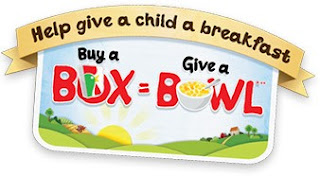What
is viral marketing?
The viral marketing is an effective tool in these days, where millions
of online content is being shared everyday. It is a type of marketing, that
some refers to it as a virus since the concept is to share and share fast,
through the Internet. It is all about spreading and by that create awareness.
As described on Dictionary.com viral marketing is: “A marketing strategy that
focuses on spreading information and opinions about a product or service from
person to person, especially by using unconventional means such as the Internet
or email.” (dictionary.reference.com)
Picture 1
The positive thing about the viral marketing is the possibility of very
much attention in very short time! But the content has to be catchy in order to
work, since people have to be willing to share it. As the entrepreneur.com puts
it, the most important thing is that the campaigns have triggers that get
people sharing and talking. Something catchy can for example be a word, a
phrase or song that is easy to remember and will spread by word-of-mouth, also.
And the number 1 key ingredient in digital marketing campaigns is fear, sex and
fun. (Gregory Pouy, 2011.) So it is also important to think about which
feelings, to appeal to. It is no news really that funny things and sex appeal
to us, but as professor Jonah Berger, author of “Contagious: Why Things Catch On,” puts it, “When we care, we share.” (helpscout.com) – So, it can turn out
very valuable to try and also “catch” the stronger emotions. This table shows
which emotions is most likely to catch our attention:
Table 1
An example of a successful viral marketing campaign is from Dove and is
based on their broad campaign, “Real Beauty.” This campaign is catchy because
of the women and awake some emotions, such as anger, since it is focusing on
the woman figure and the modern world’s representation of slim, perfect bodies
that are not really realistic. The campaign generated close to 3.8 million
shares in the first month.
It can be difficult to create viral campaigns and companies can believe
that they created a campaign, that is going to spread easily and catch a lot of
attention – and then the opposite happens. Spiceworks.com provides an example
of a viral marketing campaign gone wrong: “A
2013 campaign be Kellogg’s in the UK drew appropriate criticism for this post:
“1RT=1 breakfast for a vulnerable child” as part of a Give a Child a Breakfast
campaign. So if the message isn’t tweeted enough, the kids will starve?” so
companies has to be careful – you want an reaction and reach people’s emotions,
but you do not want to be offended and provoke by you as a company.
Picture 2
What is so interesting about the viral marketing is that, of course
companies has to be aware of technology and making the medium easy to transfer or
share, but what is more important is to understand the psychology behind the
sharing process. As mentioned before, when some specific emotions are trigged,
the campaign will have a better chance of being shared. But also, people are
social and in the modern world of social media where for example facebook,
twitter, youtube etc. has become a tool to expressing who you are, what you
stand for, like and so on, it is very important to think about which social key
drivers is relevant in the viral marketing.
Jonah Berger has identified six key drivers, that are very useful, and
called them STEPPS – it is the Social currency (what we share has contain
something that makes us look good to those around us), Triggers (has to be easy
to remember, so it stays at the top of our mind,) Emotion (stay true to our
brand and have the feelings of our receiver in mind, “talk” to them,) Social (people identify what they see
others do or share,) Practical value (our campaign has to be relevant for the
time being) and Stories (it should reinforce the story of your brand.)
So if a company manage to understand the technological and psychological
tools and elements of the viral marketing, it can turn out very efficient and
they can acquire a lot of attention in short time and at a low price, compared
to the number of people who will share and see the campaign.
Written By Camilla Sønnichsen and Benedicte Hurlen
References:
(Gregory Pouy, 2011)- Mady Keup, PowerPoint, SKEMA 2015.
dictionary.reference.com
Picture 1; https://circle.solutions/ad-vines/




Thank you again for all the knowledge you distribute,Good post. That said, WeChat has been making a push for international expansion, especially in Africa. It’s Africa’s fastest growing social communication platform, and is estimated to have about 5 million users in South Africa alone (compare that to the 13 million South Africans using Facebook). So you shouldn’t overlook the WeChat marketing potential in the rest of the world, even if the numbers are not as tantalizing as that huge Chinese figure. Best China marketing agency
ReplyDelete